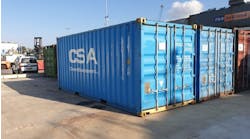Offshore staff
HOUSTON –Wood Mackenzie has listed the parameters it expects to see at work that will affect the upstream petroleum industry going forward.
The list starts with the strain of low oil prices. Financial performance in 1Q 2015 will deteriorate as the impact of a full quarter of low prices hits earnings. Crude hedging program and integration will provide temporary protection for some for a quarter or two; as will lagged oil index LNG and European gas contracts which will start to adjust to December/January crude prices by 3Q 2015.
The fall in revenue will be exacerbated by higher net debt. Debt has risen by 20% ($53 billion) for the 46 international oil companies Wood Mackenzie has followed since 2010. The cost of new capital for smaller companies will rise sharply in 2015. Asset write-downs will lead to higher leverage ratios and increased financial stretch for some companies. Refinancing could prove difficult in certain cases and covenants based on reserves, cash flow, and market cap ratios could come into play.
Cost cutting will be intense. The industry will plunge into full-on capital discipline. Wood Mackenzie estimates companies need to cut costs by $170 billion or 37% to maintain net debt at 2014 levels at $60/bbl Brent. This will hit new project investment, exploration budgets, operating costs, and shareholder distributions. Some $112 billion of spend on pre-final investment decision projects is vulnerable to being pushed out of 2015, and a further $145 billion in 2016. Total investment of $1.2 trillion in this suite of new projects during this decade could contribute more 7.8 MMb/d of liquids to global supply by 2020. Only the most economically robust projects will proceed, leading to a tighter oil supply/demand balance in a few years.
Distressed sales could result in a true buyer’s market in 2015. Financially strong players will put rationalization program on hold but some companies will find little choice but to sell, unable to achieve the cuts in discretionary spend required to balance the books. Large scale consolidation is more likely than any point since the late-1990s. History shows that value creation throughM&A is largely driven by commodity prices – for buyers who believe in long-term oil above $80-90/bbl, 2015 will be a year to go long.
It will not be a vintage year for exploration but a window of opportunity will open to capture high-impact acreage and discovered resource opportunities. Exploration budgets will nosedive and new ventures will be the focus. Specialists explorers will continue to retrench under intense financial pressure and some will become acquisition targets for players short on high-impact acreage. It could be an opportune time for national oil companies to get more active in exploration while financially strong majors and independents will focus on high-potential acreage at low cost.
01/26/2015


